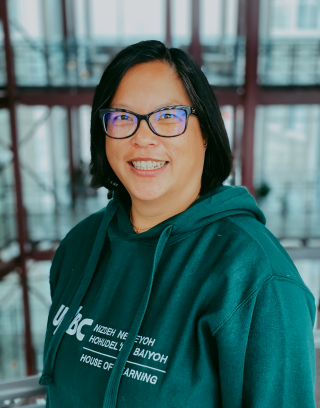
March 17, 2025 – Working Together
On Thursday, March 14, 2025, I facilitated a session on Curriculum Mapping with faculty members. The Redesigned B.Ed. Curriculum at UNBC was first implemented in September 2020 and the program has taken several turns since it’s implementation during the pandemic with moving courses, changing courses, and replacing courses. What was first imagined in 2018/2019 by the curriculum development team shifted over time with its implementation. When we were making efforts to redesign the B.Ed. Curriculum in response to the changes in BC’s Curriculum (of which finalized in 2019) was an opportunity to envision what this program can offer teacher candidates to prepare them for the workplace. The program changed from a 2-year program to a continuous 16-month program, and we enacted two interwoven courses that run throughout.
The B.Ed. Redesign went through many consultations and was approved by the BCTC (BC Teachers Council) and the UNBC Senate. We had to update former courses but also make new ones. To chart out the courses and its progression, the program WIREFRAME was created. The general design was to start the program with more theoretical courses that are familiar to an undergraduate program, then would progress towards practice with practicum scaffolding over time from term to term from observation, experiential, formative to summative. As mentioned, the wireframe provided a framework for the program to implement courses over 4-terms (or 5-blocks) and we have changed a few courses for various reasons mentioned above. Curriculum Mapping is a process to check to see “how we are doing” to check if we are living up to our promises.
At first, I tried to implement this process digitally and hoped that folks would volunteer information about their course based on the 9 Professional Standards for BC Educators, 9 First Peoples Principles of Learning, and 9 relational ways of being and knowing (i.e., the Four R’s, Kirkness & Barnhardt, 2001). The 9-9-9 framework is taught during EDUC 446 (Indigenous/Aboriginal Education: Epistemology), one of the interwoven courses. Unfortunately, participation was incomplete and completing the Curriculum Map for the B.Ed. Program would be beneficial for our program review in the fall to show evidence how we are meeting the 9-9-9 within our program but also find examples that exemplify our Signature Pedagogy of People, Place, and Land. To re-approach the Curriculum Mapping Process, we met in person last week to highlight what we doing in each course. Although we were not all, the process was active and fruitful.
I am grateful that my colleague was willing to help me out with the Curriculum Mapping process and we co-planned the session last week. I also have the support of the Chair who made meeting in person possible (i.e., bringing regional faculty to Prince George, providing food during the day, and gathering together at the end of the day with dinner). What I enjoy most is faculty and staff members coming together to co-create, collaborate, and connect. We achieved what we had set out to do with Curriculum Mapping with folks who were there, and there were many side conversations that occurred amongst folks in the room to make decisions, to clarify, and to make-sense of how things are going and establishing possible next steps. We ended the day with a closing circle describing what “People, Place, and Land” means to us. I was just wowed.
There is quite a bit of work to do, such as catching up with folks who were not able to make it to the session, to collate the data into something meaningful, to analyze the map to determine if there are any gaps within our program, and to create a product or map that depicts the journey teacher candidates experience in our B.Ed. Program in the Regional Program and Prince George. A request was also made by one faculty member to make an effort to define “People, Place, and Land” for new faculty members and those who are looking for a direction or definition. Although defining the signature pedagogy was not yet established and was intended to form with each individual, it is certainly a topic for future discussion (possibly at the program retreat during the summer). I am thankful to move forward with this project and look forward to next steps.





Leave a Reply